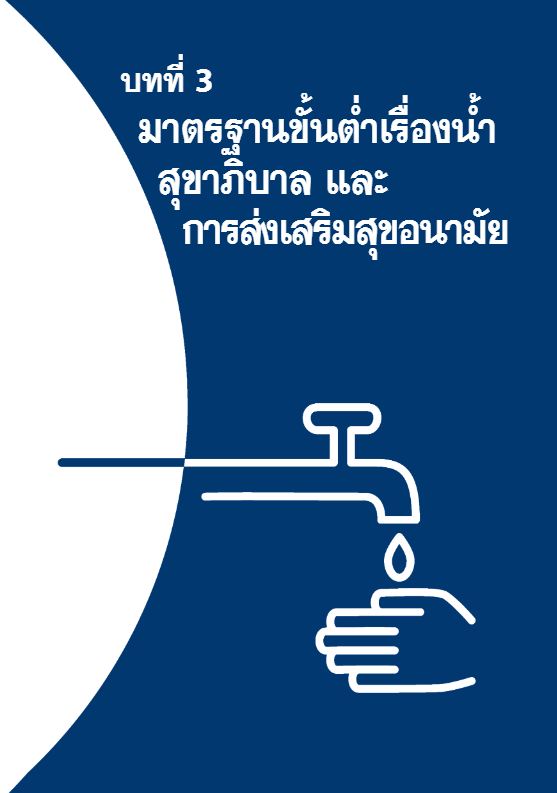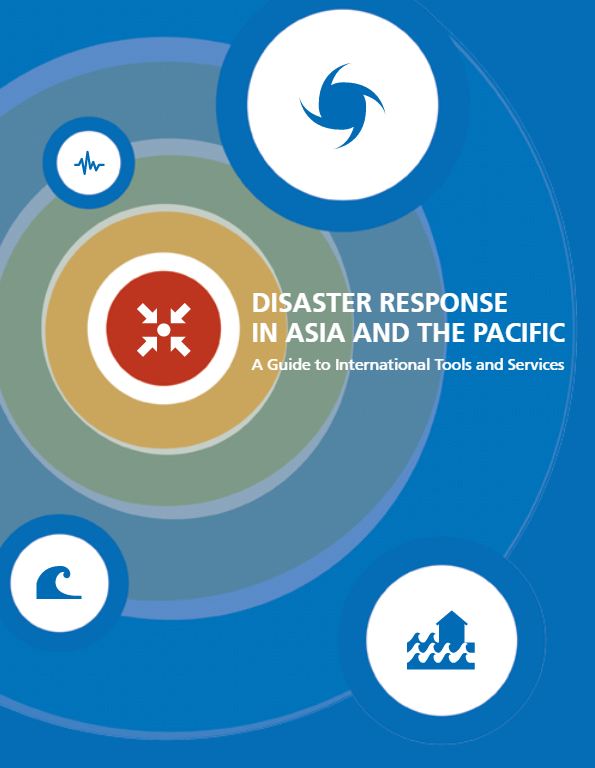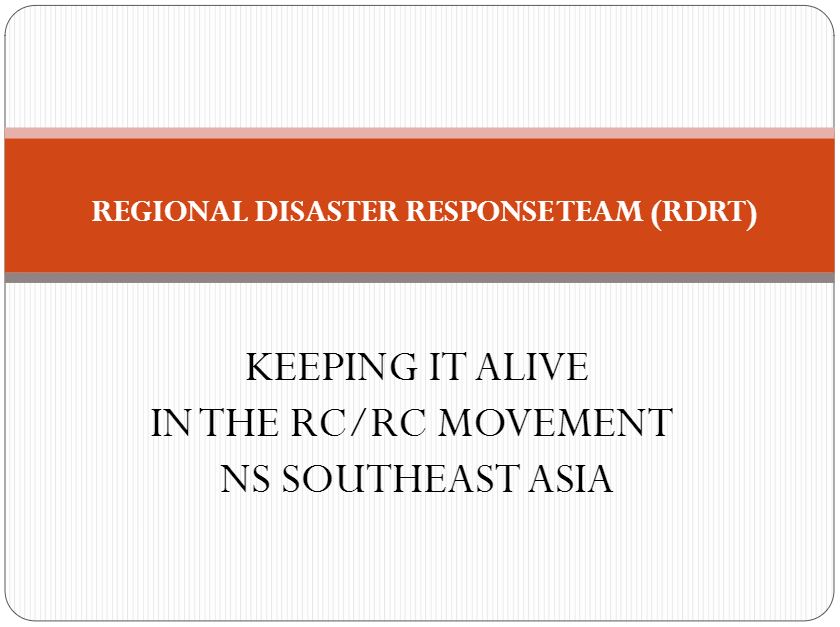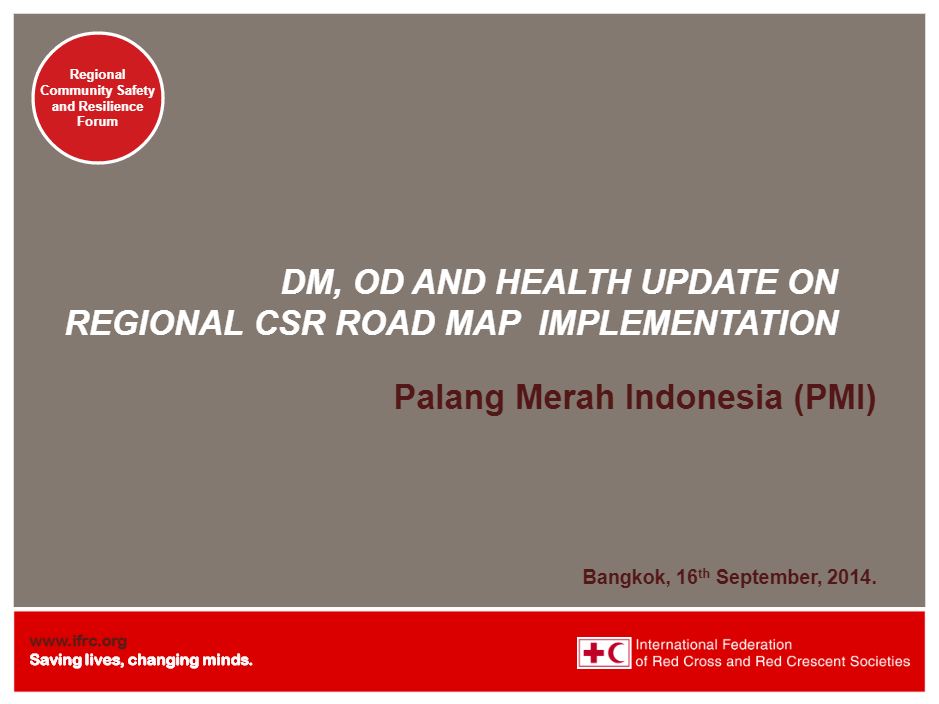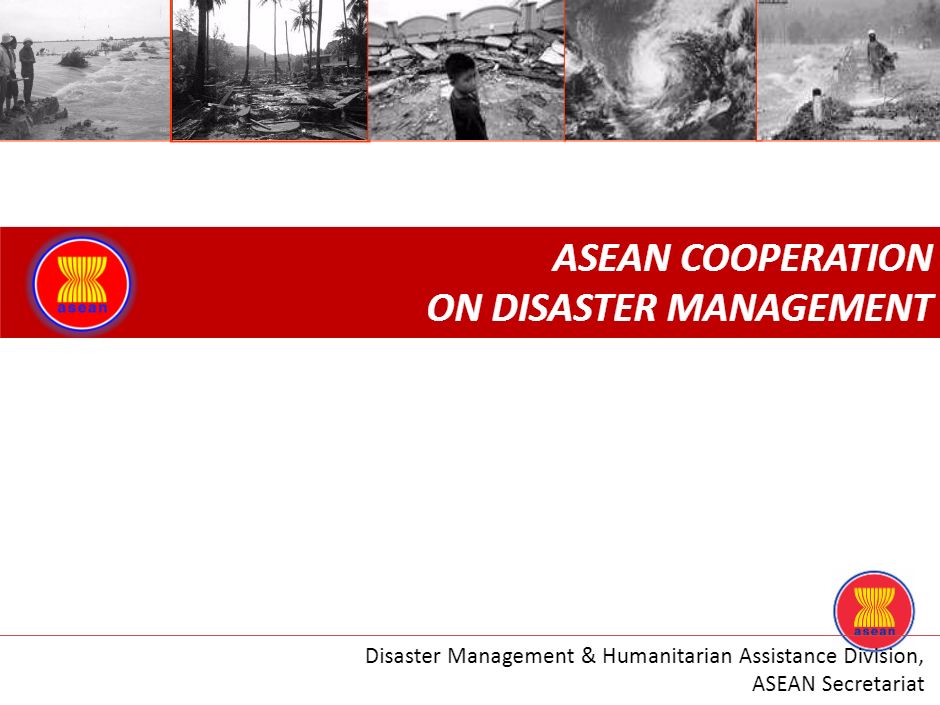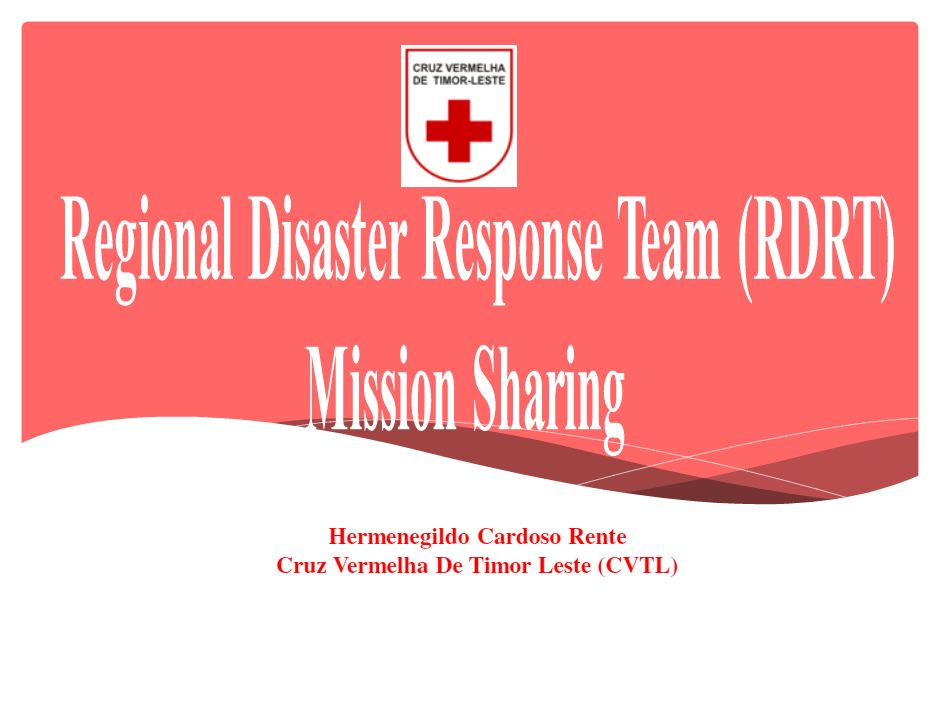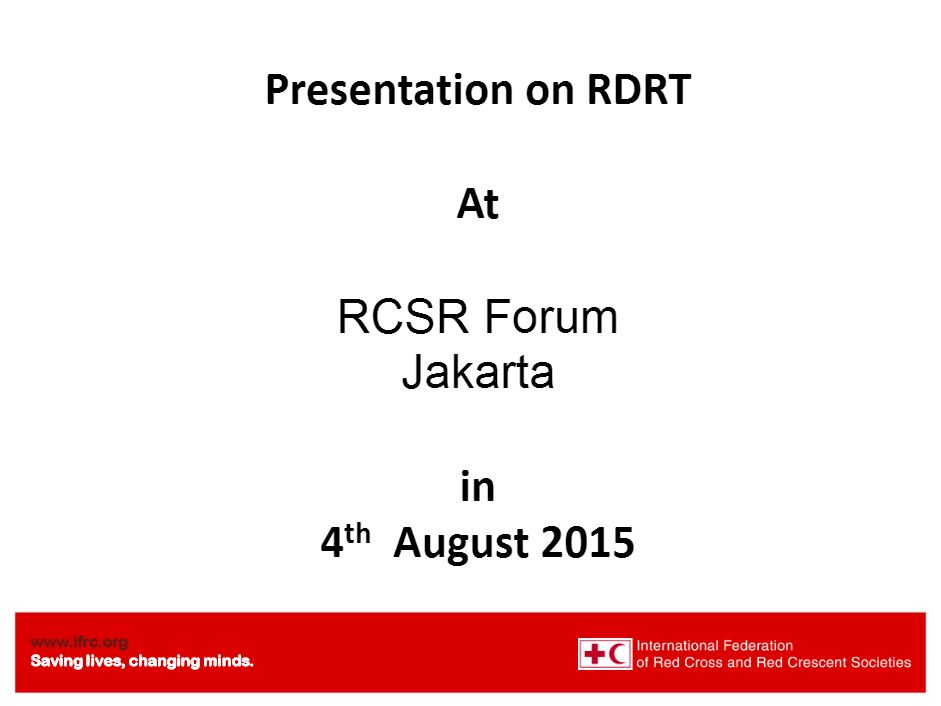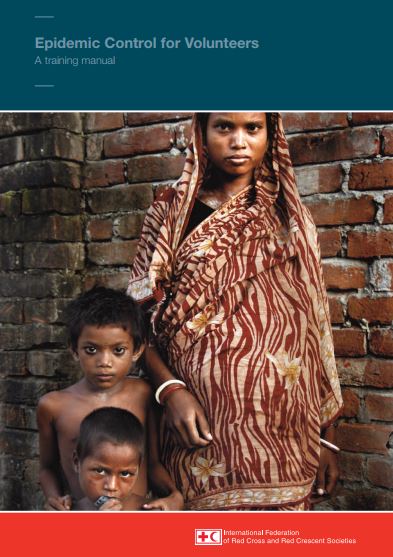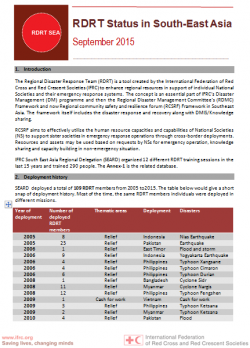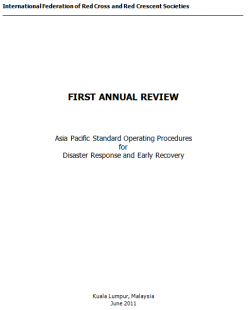Regional Disaster Response Team (RDRT) Keeping it alive in the RC/RC Movement in Southeast Asia (2015)
Purpose:
This powerpoint presentation discusses about ensuring that RDRT is reinvigorated as a regional disaster response tool after a period of non-activity in the Southeast Asia.
Overview:
The document detailed the background and previous deployment, as well as the questions that National Societies have to resolve in order to ensure that RDRT is reactivated and effective as a way forward.
Usage: Guide to implementation
Audience: National Societies
![]()
Regional Disaster Response Team (RDRT) by Arifin M. Hadi (PMI)
Purpose:
The powerpoint presentation is a status and progress report to the annual Regional Community Safety and Resilience Forum in 2015, as compared with the 2014.
Overview:
As there had been an RDRT deployment in the in Nepal earthquake (2015), the following are some reflections from the RDRT members:
- It’s important to have a unified chain of command with clear roles and responsibilities – not to have ”too many cooks in the kitchen”. Yet also, it’s important to be flexible and to just get involved and do what’s needed, even if it’s not in your original terms of reference.
- The difficult moments lie in how to deal with communities when they have so much hope in the Red Cross, that the we can provide them with the assistance they need. From my experiences in local and regional response, one of the things that I take care to remind myself – and the team – is that we must always be clear on our role and limitations before we go to meet the community. This is important because we don’t want them to have expectations we cannot meet.
Usage: Guideline for future deployment
Audience: National Societies
![]()
Epidemic Control for Volunteers: A Training Manual
Purpose
This toolkit is designed to guide actions in response to epidemics. It consists of three major components: disease tools, which describe the diseases that can cause epidemics; action tools which describe actions that need to be taken in epidemics; and community message tools which provide important information for the community.
Overview
Three steps have to be followed to use the toolkit:
- Step 1: Find the card that matches the disease the local health authorities have said is causing the epidemic. Remember what causes the disease, how it is transmitted, what symptoms it causes, how it is prevented and controlled, and what volunteers can do to help.
- Step 2: Find the appropriate action tool by matching its number with that of the disease tool. Identify the vulnerable members of the community, know the source and cause of the epidemic, and rely on these cards for specific actions to help people during the epidemic.
- Step 3: Match the numbers on the front of the chosen action tool with those on the correct community message tool. The tools need to be read carefully to ensure understanding, and then should be shared with other members of the community so that, in any epidemic, everyone knows what to do, and what not to do.
- A list of disease tools with corresponding actions can be found on pp. 78-79.
Usage: Training; Guidance for project implementation
Themes: Response / relief; Community-based or community participation; Health; Information, Public awareness and public education /Education and Communication; Institutional preparedness; Epidemic Control; Communicable disease; Project/programme planning
Audiences: Technical staff; Volunteers
Citation: International Federation of Red Cross and Red Crescent Societies (2008). Epidemic Control for Volunteers: A Training Manual (pp. 1-109).
![]()
Regional Disaster Response Team (RDRT) Status in Southeast Asia – Sep 2015
Purpose:
This documents refers to a tool created by the International Federation of Red Cross and Red Crescent Societies (IFRC) to enhance regional resources in support of individual National Societies and their emergency response systems through cross-border deployments. This first programme is targeted towards experienced and committed volunteers who will then become trainers for subsequent NDRT courses.
Overview:
The document provides information on Regional Disaster Response Team (RDRT) and disaster response and recovery efforts. IFRC South East Asia Regional Delegation (SEARD) organized 12 different RDRT training sessions in the last 15 years and trained 290 people. It assesses RDRT performance from 2005-2015 on development history, standardization of RDRT database, learnt lessons and scenarios to improve, recommendations in terms of mobilization, institutionalization and five proposals for upcoming work.
Usage: Learning from experience
Audience: Technical staff
For related documents, click here RDRT 2012
![]()
First Annual Review: Asia Pacific Standard Operating Procedures for Disaster Response and Early Recovery 2011
Purpose: The document is aimed to provides data analysis and lessons from experiences in the following SOPs in the period from April 2010 to April 2011 and recommendations for updating as necessary. The main objectives of the SOPs are:
- to ensure an efficient working process
- to ensure clarity on the roles and responsibilities of the Federation Secretariat representation with regard to
- the management of disaster response and early recovery operations
- the facilitation and coordination of international assistance in support of a National Society engaged in disaster response and early recovery within Asia Pacific.
Overview: This document outlines the standard operating procedures (SoPs) for disaster response and early recovery for the IFRC Secretariat within Asia Pacific zone. The AP SOPs reflect the revised roles and responsibilities of the International Federation Secretariat’s offices in Asia Pacific, based on the Secretariat’s decentralisation process and the outcomes from regional meetings and operational reviews over the past three years. It includes principles and policies, involved parties, tools, the SOP Implementation and SOP Maintenance. Findings and recommendations in two main categories: work process and the roles and responsibilities within that work process.
Usage: Guidance for project implementation
Audience: Technical staff, Volunteers
For related documents, click here Chart: Defining the need for international assistance, size 0.03 MB
![]()


